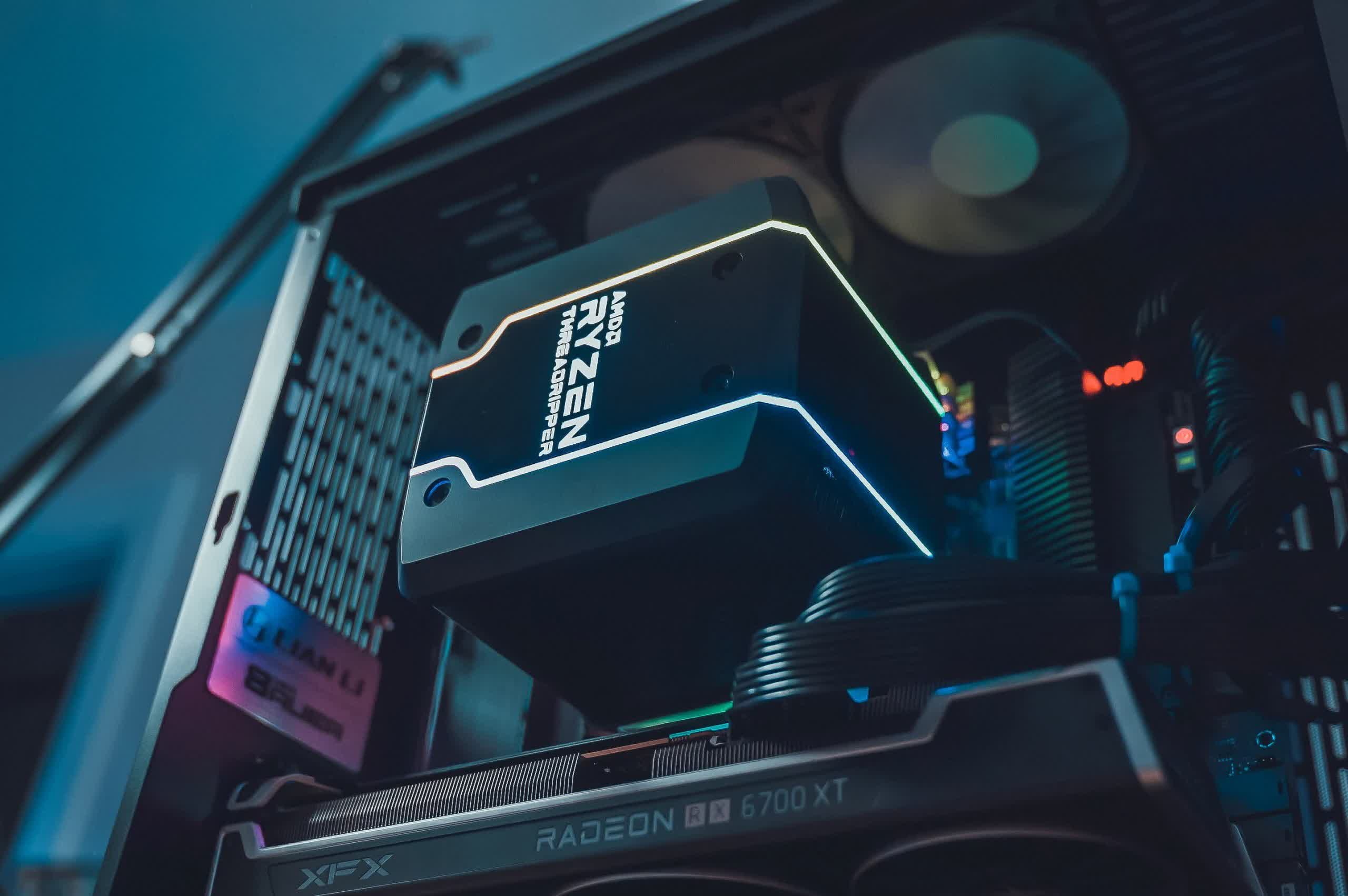AMD might be about to give dual-socket functionality to their Threadripper CPUs
In a nutshell: At the end of last week, an AMD report describing the features and specifications of the upcoming 5000-series Threadripper Pro CPUs was leaked. It said that all v models would have dual-socket functionality. Shortly afterwards, two Threadrippers appeared in the PassMark database having completed the benchmark in dual-socket mode - but they're not from the 5000-serial.
Instead, they were two of the seventeen-calendar month-erstwhile flagship of the 3000-series: the 3995WX. In theory, considering the CPU shares its hardware with the dual-socket-capable Epyc 77x2-series, the 3995WX has simply ever been prevented from engaging in a dual-socket mode past software limitations.
Working in tandem, the two CPUs achieved a score of 123,631 points; 35% more than the median outcome of a unmarried 3995WX, and the highest score of any ii-CPU pairing in the database.
If the result is genuine, which it seems to be, then in that location's only one likely culprit: AMD themselves. It's only too unlikely that another party could modify the 2 CPUs, which cost some $8,800 each, and the requisite motherboard, successfully.
As for why AMD would be experimenting with their onetime CPUs, our all-time guess is that the creation of the first dual-socket sWRX8 motherboards for the 5000-series has raised some questions almost their backward compatibility. A microcode update could conceivably enable dual-socket functionality in 3000-series CPUs, though AMD doesn't accept much of an incentive to create 1.

Credit: Onur Binay
At a minimum, though, AMD does accept an incentive to enable dual-socket functionality on the 5000-series. In the past, doing then would've cannibalized the Epyc serial; it's one of the main features that differentiate the 2 product lines. Merely, as of 2022, the Epyc series will be an unabridged "generation" ahead of Threadripper and use a newer architecture at a minimum, if not a newer node as well.
Most of the available information well-nigh the 5000-series comes from the aforementioned report, which was acquired by Igor's Lab. Its contents haven't been verified beyond a few lucifer-ups with other leaks, but Igor's Lab is a trustworthy source. That said, sometimes specifications are changed in the lead-upwards to the processors' declaration.
Possible Threadripper Pro 5000-series Specifications
| 5995WX | 5975WX | 5965WX | 5955WX | 5945WX | |
|---|---|---|---|---|---|
| Cores / Threads | 64 / 128 | 32 / 64 | 24 / 48 | 16 / 32 | 12 / 24 |
| Single-Core Heave Clock | 4.55 GHz | ||||
| All-Core Boost Clock | 2.70 GHz | three.threescore GHz | iii.80 GHz | 4.00 GHz | iv.ten GHz |
| Base Clock | 2.25 GHz | 2.lxx GHz | 2.80 GHz | ii.ninety GHz | two.94 GHz |
| L3 Enshroud | 256 MB | 128 MB | 64 MB | ||
| L2 Cache | 32 KB | 16 KB | 12 KB | 8 KB | half dozen KB |
| TDP at Boost Clock | 280 Westward | ||||
| TDP at Base Clock | 229 W | 190 W | 171 W | 152 Due west | 138 West |
There'southward at present only Pro (with a "West") versions of the processors, according to Igor'due south Lab. This year, in that location are five, up from 4; the addition was of the 24-core model.
On the whole, the specifications of these processors aren't too different from their predecessors. Their all-core clock speeds are a couple of hundred megahertz higher or lower in some cases, simply broadly similar. Only their single-cadre clock speed is a consistent upgrade of 250-350 MHz.
Like the Ryzen 5000-series, the biggest upgrade is under the hood: the Zen iii architecture. In our testing, it could provide an IPC operation uplift of 10-20% in diverse applications. It might provide an fifty-fifty larger uplift on higher-core count models that benefit from its impressive inter-core and cache latency, vastly improved over the Zen 2 architecture of the 3000-series.
Only it's more likely to be the dual-socket functionality driving the sales, should information technology eventuate. It would be interesting to see what 128 unlocked cores can practice.
Source: https://www.techspot.com/news/92748-amd-might-about-give-dual-socket-functionality-their.html
Posted by: dawepith1958.blogspot.com


0 Response to "AMD might be about to give dual-socket functionality to their Threadripper CPUs"
Post a Comment